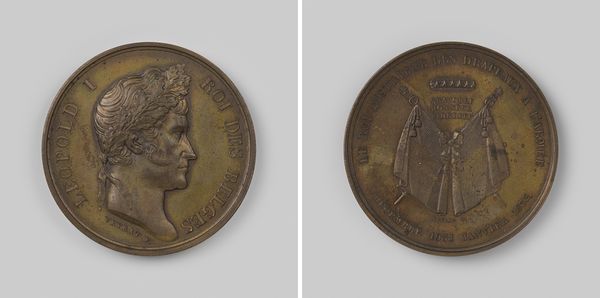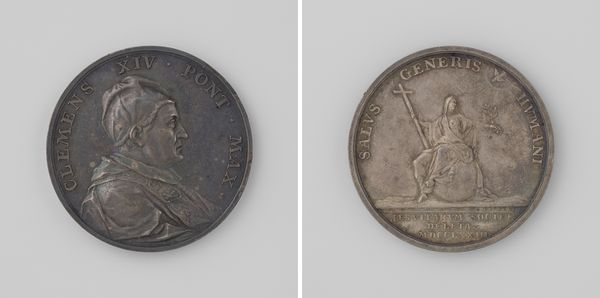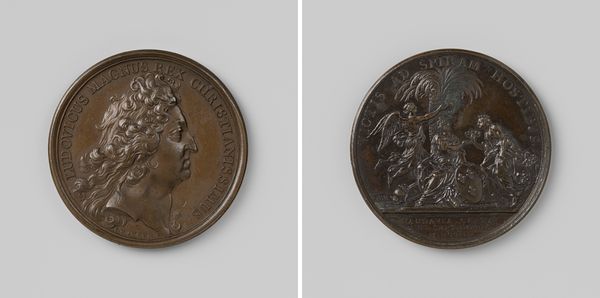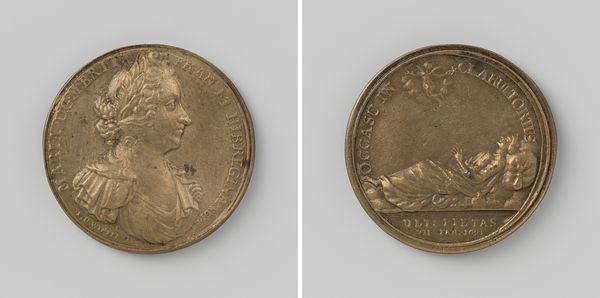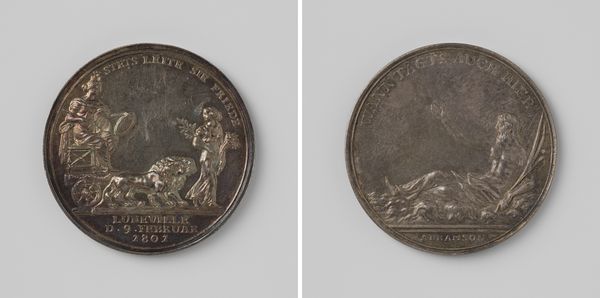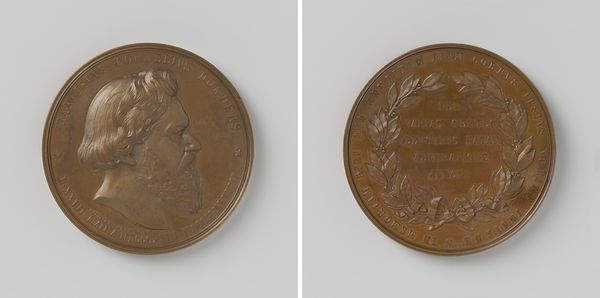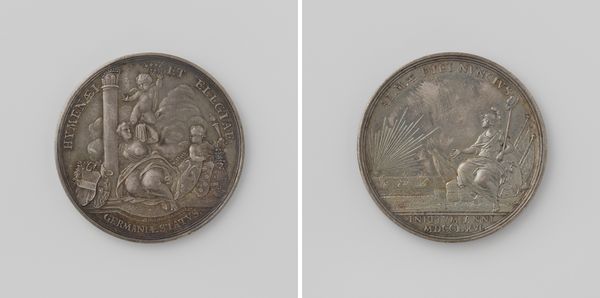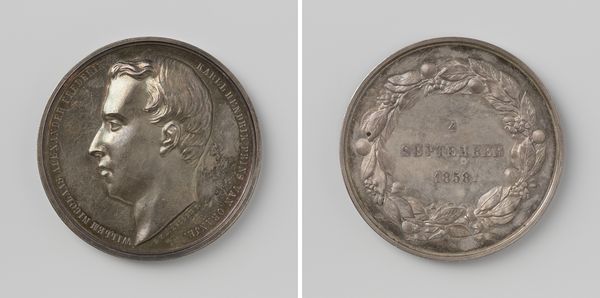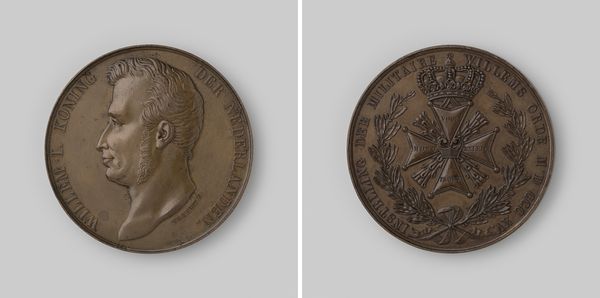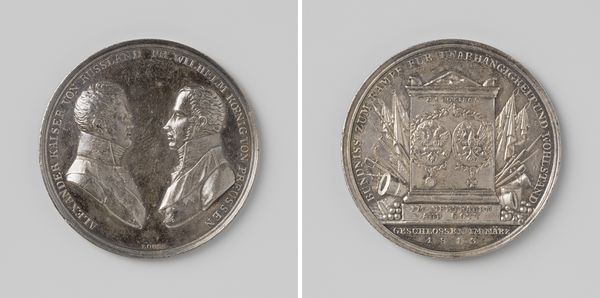
Verblijf van Paul Petrowitz en Maria Fjodorovna, grootvorsten van Rusland te Brussel 1782
0:00
0:00
metal, bronze, sculpture
#
portrait
#
medal
#
neoclacissism
#
metal
#
sculpture
#
bronze
#
sculpture
#
history-painting
Dimensions: diameter 4.1 cm, weight 31.22 gr
Copyright: Rijks Museum: Open Domain
Curator: At first glance, it's the color, a very earthy bronze that hits me. What do you see? Editor: Right, that aged bronze does lend a sense of history. We're looking at a commemorative medal crafted in 1782 by Theodorus Victor van Berckel. It’s entitled, “Residence of Paul Petrovich and Maria Feodorovna, Grand Dukes of Russia, in Brussels”. Curator: It seems to portray two distinct narratives: the dual portraits, classical in their profile, on one side, and on the flip, an allegorical pile-up that's not immediately legible. Editor: Exactly! That face profiles embody neoclassicism in its purest form; idealized and stoic. Yet those figures themselves become symbolic—signifying power, status, and the enduring legacy of nobility. Curator: So, the other side… what do we have there? Discarded weapons, flags... a helmet resting amongst ruins. A fascinating jumble, as if a whole war game has just been left out for the rain. And, a sort of deflated air horn perched almost mournfully above the heap. It certainly seems to express themes of either achieved victory or resignation in defeat. Editor: Definitely! The objects on the other side suggests it! Note how Berckel is tapping into well-established tropes to transmit the idea of Peace achieved. But with that odd instrument floating above, the meaning seems unstable, still vibrating with unrealized meaning. It resists fixed interpretation, you know? It hums, it vibrates with possibility. Curator: That unresolved air is what pulls this piece into an interesting sphere. We recognize the components, the portraits, the battle symbolism, the very Neoclassical sensibility attempting to convey concepts of virtue, honor and power, yet that peculiar floating trumpet defies final understanding. I guess meaning keeps rippling outwards from the surface of the metal, even now. Editor: Agreed. This object manages to hint at histories more intricate than the initial intended purpose, creating a little reverberation down the corridors of time, wouldn't you agree?
Comments
No comments
Be the first to comment and join the conversation on the ultimate creative platform.

